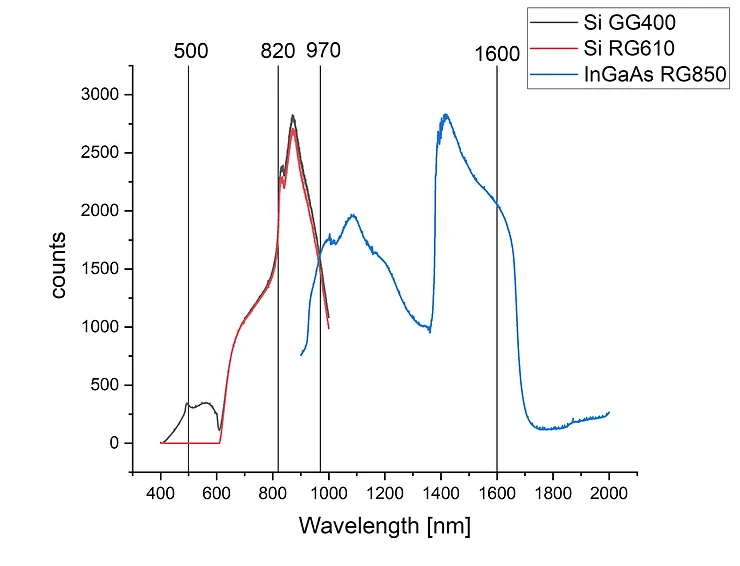To eliminate inaccuracies in spectral measurements using a tungsten halogen lamp as a light source, second-order filters are strongly recommended. Optimal optical setup varies based on the spectral region of interest. This article demonstrates spectral measurement using a monochromator MO250 within the 500-1600 nm range. This spectral region is covered by a single reflective ruled diffraction grating with 600 grooves per millimeter, blazed at 750 nm (efficiency curve above).
To ensure accurate measurements, three second-order filters and two detectors are employed. The final dataset is constructed by combining three overlapping spectral scans. Initially, a silicon photodiode with a GG400 Schott color glass filter is used to cover the 500-820 nm range. Subsequently, for the 820-970 nm region, the silicon photodiode is retained but the filter is replaced with an RG610 Schott color glass filter. This intermediate step is crucial to eliminate residual errors arising from the second-order diffraction of 400-500 nm radiation. Finally, the detector is switched to an InGaAs photodiode for wavelengths beyond 970 nm. While the quantum efficiency of silicon photodiodes typically begins to decline around 1000 nm, reaching their limit at 1050 nm, in our setup, the transition to InGaAs is made at 970 nm where signal magnitudes from both detectors are equal. This routine simplifies radiometric calibration. To suppress second-order radiation in the final spectral range, an RG850 filter is applied.

In the upgraded version of the MO250 monochromator this process is done automatically.
